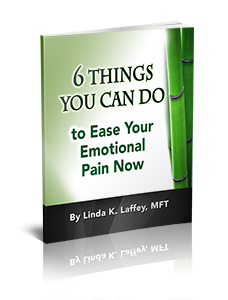It’s only natural to avoid those things that could potentially cause you pain. Those with Post-traumatic Stress Disorder (PTSD) may understand this notion more than most.
For a simple example, think about the shoe-hungry dog a few blocks from your house. You’ll probably take another route on your morning jog, right?
Or, consider that coffee shop where you and a former friend had a falling out. It’s easy to find another way home simply to avoid it, and avoid the feelings that notoriously bubble up.
No matter what the situation, there are things in this world that arouse uncomfortable feelings—anger, shame, fear, regret, etc.
However, avoiding triggers to sidestep those big emotions only prolongs your pain. Here’s what I mean and what I would suggest instead.
Understand PTSD and Avoidance
Fortunately, PTSD is becoming more widely understood. And, as you may know, it’s no longer strictly reserved for those returning from war or who experienced a life-threatening event.
With that said, PTSD changes how a person perceives the world. In turn, it alters how the world impacts that person.
For example, you may have recently ended a decade-long toxic relationship or lost a loved one to a long fight with a chronic illness. It’s not uncommon to “put on a brave face,” and dissociate your emotions from the situation.
This may mean pushing down or bottling up feelings surrounding that person or situation. Moreover, it could mean avoiding anything to do with them.
Why Avoidance Doesn’t Work
PTSD and avoidance often go hand in hand. After all, it’s a strategy—albeit temporary—that feels like it works. The one caveat is that avoidance actually makes PTSD symptoms worse.
But, why? This is where it can get a little hazy.
First, we have emotions for a reason. Namely, for the survival of our race, as well as to help us to find success and understand the world in which we live.
Of course, the thing about emotions is that they’re not always pleasant. Consider emotions such as fear, anger, shame, regret.
And yet, these emotions help guide us through our lives.
Avoiding them is as if you brush the dust under the rug. They’re still there dirtying your mental house. You just can’t see it or deal with it as effectively. Avoidance is a short-term fix. Eventually, the “dust” builds up and may even end up overwhelming you.
Here’s What to Do Instead
Avoidance comes in many forms—avoiding a personal landmark, using a substance to numb the pain, bottling up emotions, etc. are common among PTSD sufferers.
Much like these common short-term solutions, managing your emotions takes considerable effort. However, facing the emotions you’ve avoided in the past tends to produce a more long-term effect.
Here’s the problem—it can hurt, overwhelm, and feel incredibly bad to face painful emotions on your own.
Healing shouldn’t have to reopen a wound again. And being emotionally vulnerable shouldn’t mean you have to bleed all over the floor of your heart.
The key? To find a helpful way to face those big emotions where you feel safe and secure. This is where a therapist can help you, encouraging a drop of emotion at a time rather than a rushing river.
Again, you needn’t dread re-experiencing past trauma when you face painful emotions. Using EMDR, you don’t have to relive pain as many people fear in traditional talk therapy. Please see more on EMDR throughout this blog and my website.
It’s often empowering to face and accept your emotions, freeing your life from severe emotional limitations. Eventually, your emotional pain simply won’t have the same hold on you it once did.
Take the first step…
If you’re ready to consider EMDR therapy to help you cope with PTSD, I would like to help. I have been a Certified EMDR Therapist since 2004, and I have helped hundreds of clients benefit from this incredibly useful methodology.
Please get in touch with me via voicemail or email so we can discuss how we might work together to change your life for the better as quickly and effectively as possible.
I look forward to hearing from you.
Linda K. Laffey, MFT


